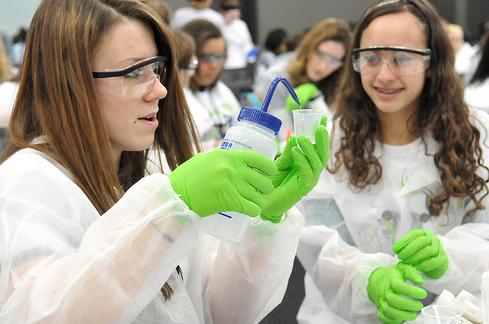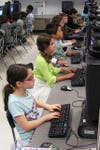Data Scientist: STEM Boys Club Open To WomenData Scientist: STEM Boys Club Open To Women
Data scientist Laurie Skelly says STEM is still largely a boy’s club, but that’s changing.


12 STEM Resources For Young Women
12 STEM Resources For Young Women (Click image for larger view and slideshow.)
It’s an established fact that women are underrepresented in science, technology, engineering, and math (STEM) professions, although gender ratios vary considerably by field. For instance, female scientists and engineers are concentrated in the social sciences (58%) and biological and medical sciences (48%), but have a relatively low participation rate in engineering (13%) and computer and mathematical sciences (25%), according to 2014 data from the National Science Foundation (NSF).
So what’s it like being a woman in data science?
information asked Laurie Skelly, a data scientist with Datascope Analytics, a Chicago-based data science and design company. Skelly started at Datascope two years ago, a few months after receiving her PhD in integrative neuroscience from the University of Chicago.
Skelly acknowledges there are far fewer women than men in her profession, but says the situation is improving. At Datascope, about 30% of the data scientists are women, she estimates.
Data science is often referred to as a male-dominated profession, a term that makes Skelly bristle. While the male-female ratio in data science is far from 50-50, the overall atmosphere is one of "inclusion," at least in her experiences.
"Are there more men than women in the field? Yes. But I wouldn't say 'male-dominated' because that carries a quantitative connotation as well as a power-based connotation," said Skelly in a phone interview with information. "There are more men than women in my company, but at events I go to, I haven't at any time felt like a second-class citizen."
The term "data scientist" is somewhat vague, of course, and can encompass a variety of roles. Depending on the role, the gender ratio may vary considerably. Some organizations, for instance, may consider a data engineer -- one who sets up systems and processes that others use to work with data -- as either a data scientist or as part of a data science team.
In Skelly's experience, data engineers are overwhelmingly male. "I think there are lots more men in that field, probably from the underlying IT pipeline," she said.
But in other data science professions, the gender ratio is more balanced, including "the kind of data scientist that I am, where I'm involved in problem-solving with clients … or with management to find a solution," she noted.
Although more women are joining the science and engineering workforce, their percentages are actually declining in some STEM fields.
"In all fields except computer and mathematical sciences, the proportion of women in the workforce with associated highest degrees has been increasing over the past two decades. In computer and mathematical sciences, this proportion has declined even as the number of women with a highest degree in the field has risen," according to 2014 NSF report on women and minorities in STEM fields.
Hard work pays
What advice does Skelly have for young women aspiring to become data scientists?
"Be exactly who you are, and work hard," she said.
Obvious advice? Not necessarily.
Skelly shared a story about being one of the judges last year in an engineering design competition for the freshman class at Northwestern University.
"It was a long and boring ceremony, and I'm watching the women in the audience," said Skelly. "My girl-brain clicked in a little bit, and I was [thinking], 'What are you doing on your cell phone?' and 'Why is your skirt so short?' and 'Are you really chewing gum right now?'"

(Image source: Woodleywonderworks via flickr)
In short, she found herself judging the female students, which she had no intention of doing.
"All of a sudden, it hit me that I was looking at 18-year-old women, and it was a totally different experience from when I was at college," Skelly said. "I wouldn't have guessed that this was the engineering class. They were college freshman girls, and they were comfortable with who they were … and I was so awed by the fact that they could do that. In my experience, I was hyper-aware of being female in a male environment."
[Did you hire the wrong person? Read this story to see what you can do.]
She continued: "I don’t know if this sounds as revolutionary to anyone else as it does to me, but it really helped me with a lot of things. I've had a lot of dumb ideas in the past two years: Should I change my image to be taken more seriously? Should I get nerdier glasses? Take up nerdier hobbies? Will my life be easier if I try to change who I am?"
The Northwestern event helped Skelly realize she didn't need to adopt an affected appearance or lifestyle to succeed in data science.
"I should be exactly who I am," said Skelly. "People can learn that someone who looks like me, and has the interests that I have, can also have the skills that I have."
Attend Interop Las Vegas, the leading independent technology conference and expo series designed to inspire, inform, and connect the world's IT community. In 2015, look for all new programs, networking opportunities, and classes that will help you set your organization’s IT action plan. It happens April 27 to May 1. Register with Discount Code MPOIWK for $200 off Total Access & Conference Passes.
About the Author
You May Also Like






